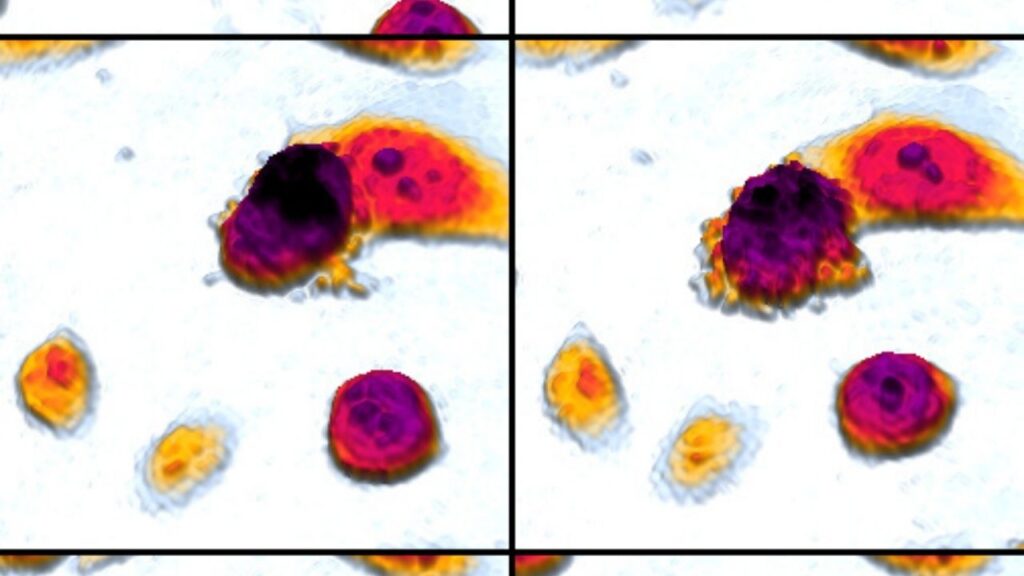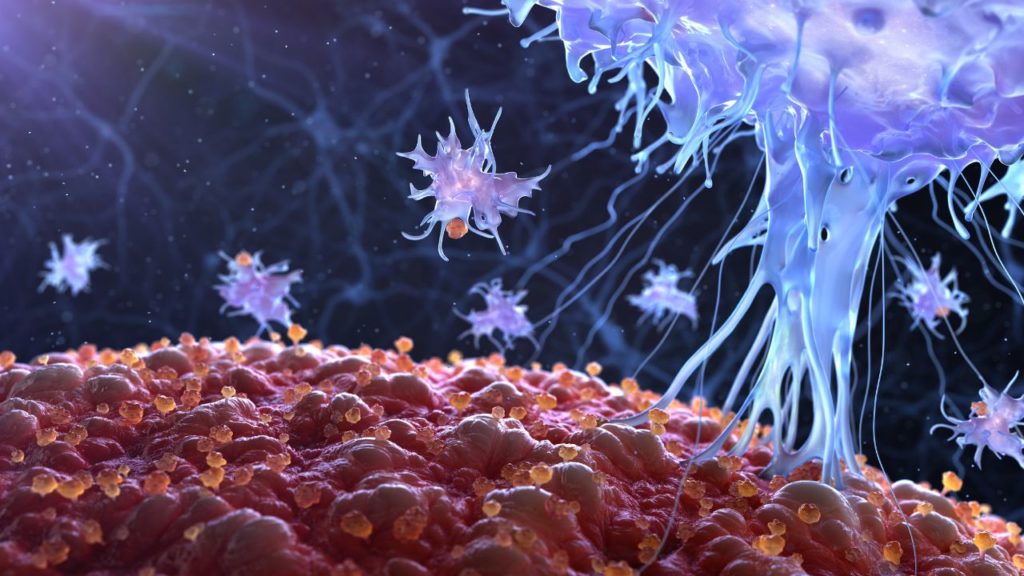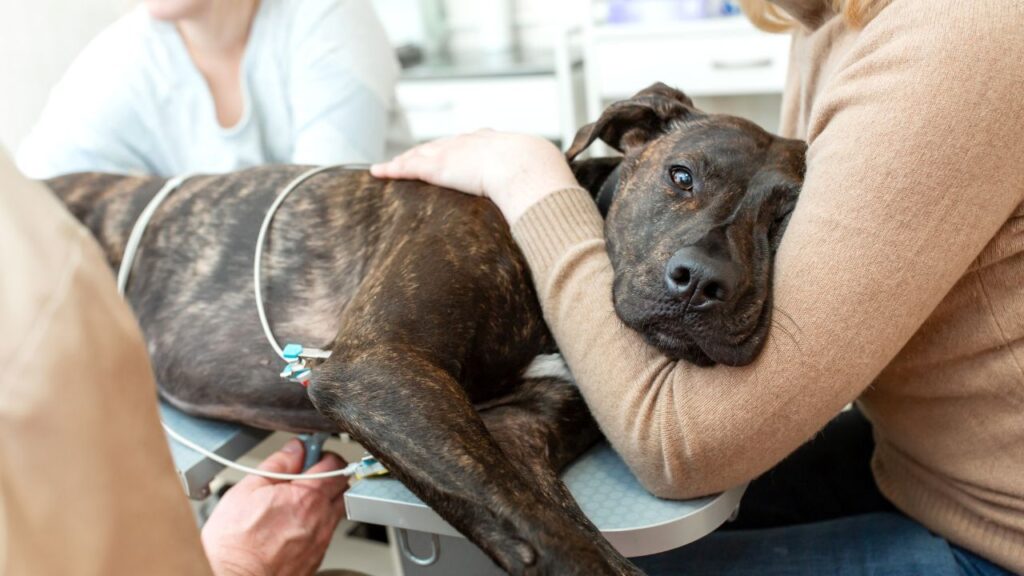The Difference Between Benign and Malignant Tumors
A tumor diagnosis does not automatically mean it's cancer. Below is a more in-depth explanation of both benign and malignant tumors in dogs, including the most common types and treatment options for each.
Key Takeaways
- Malignant tumors are considered cancerous and are more likely to metastasize or spread to other locations in the body. Benign tumors do not.
- Some benign tumors are surgically removed simply to confirm their benign status.
- There are only a few types of benign tumors that can potentially become malignant later on. It is important to closely monitor all of your dog’s masses and alert your veterinarian if any of them change or grow.
- The appearance and location of the tumor may help veterinarians discern if it is more likely to be benign and malignant. However, the way to know for sure is to test a sample of your dog’s tumor, either through fine needle aspirate or biopsy.
- A benign tumor should be surgically removed if it interferes with another body part, causes irritation or pain, or causes any other problem for your dog’s comfort and health.
Benign Versus Malignant Tumors in Dogs
Many laypeople use the word “tumor” to mean “cancer,” but medically, these words are not interchangeable. Your dog’s tumor is not necessarily life-threatening. Some tumors are benign, non-cancerous growths, and others are malignant cancers. In this article we will help explain the difference between benign and malignant tumors. First, let’s look at what a tumor is.
What Are Tumors, Exactly?
Tumors are simply clusters of cells in your dog’s body that are growing abnormally. Sometimes your veterinarian will call a tumor a “mass” or even just a “lump” or “bump.”
Another word you may see for uncontrolled growth is “neoplasia.”
Another word for the tumor itself is “neoplasm.”
Not all tumors are cancer, but all cancers are tumors.
Tumors or neoplasms are classified into two groups: benign and malignant.
- Benign growths do not metastasize, and they do not invade local tissue, though they can sometimes grow large or become inflamed, depending on the type.
- Malignant growths are cancerous and can be life-threatening if not treated. However, modern treatments and new discoveries are allowing for more options than ever before to treat your dog and keep her healthy.
Benign Tumors in Dogs
Tumors only in one location in the body that do not invade or spread to other parts or organs are commonly defined as benign tumors.1
- They grow more slowly than cancerous tumors and have clearly defined borders.
- Benign tumors are generally non-life threatening and easily treatable.
If a benign tumor is not causing problems, it might not need removal. However, there are a few times when it should be surgically removed even though it is not cancerous.
- If they grow big enough to press on vital organs, blood vessels, and nerves.
- If there is a benign tumor in the large intestine, it could obstruct bowel movements, which is painful and potentially toxic.1
- Oral fibroma are technically benign, but some of these tumors can be locally invasive and even destroy the surrounding bone.
- Benign tumors in organs that make hormones can potentially increase those hormones, which can cause imbalances in the body.
Most of the time, they cause no further problems once benign tumors are gone.
Veterinary Oncologist Dr. Sue Ettinger (AKA Dr. Sue Cancer Vet) explains when and why you should get a lump checked out.
Types of Benign Tumors in Dogs
There are many, many types of benign tumors in dogs. Some of the more common ones include:
- Leiomyomas are tumors of the smooth muscle cells in the uterus and intestine
- Rectal Polyps are tumors of the rectum. These growths have the potential to become malignant over time and should be monitored.2
- Papilloma is a viral and contagious tumor that usually grows in dogs’ mouths. Dogs who go to daycare or dog parks are especially susceptible. Papillomas usually dry up and fall off on their own, but sometimes surgical removal is required because they can be uncomfortable.
- Basal Cell Tumors are tumors of the top layer (epidermis) of the skin. They are commonly caused by the uncontrolled division of basal cells of the sweat glands, hair follicles, or sebaceous glands. They are very common, but less than 10% of them become malignant.3 They are one of the most common and least concerning tumors in dogs.
- Lipomas are tumors of the fat cells in the subcutaneous (under the skin) tissue. These are usually moveable and painless.
- Fibrous Skin Tumors are tumors of the fibrous connective tissue. They are usually a result of chronic irritation to an area, are usually slow-growing, and are commonly called skin tags.4
- Hemangiomas are tumors of the blood vessels. They are commonly found on the legs and trunks of adult dogs. They look like blood blisters, lumpy and reddish black.5
If your dog is diagnosed with a benign tumor, discuss the specific diagnosis with your veterinarian.
- Certain types of benign tumors have the potential to become malignant and require close monitoring.
- Other benign tumors closely resemble malignant tumors, so your veterinarian will likely want to remove these and send them to a lab for more information.
Ask your veterinarian if your dog’s benign tumor will affect any organs or bodily functions and what the recommended treatment options are, if any.
Dr. David Vail, a veterinary oncologist, thinks a second opinion is often in order.
Malignant Tumors
Malignant tumors are uncontrolled growths that can spread into other organs and tissues (metastasis) and can be life-threatening, depending upon the type, location, and extent of metastasis or local invasion.
Malignant tumors are also known as “cancer.”
A cancerous tumor will continue to grow and spread throughout the body, eventually overtaking normal systems and organs.
How We Classify Malignancies in Dogs
When your dog gets a diagnosis of cancer, it can be an overwhelming blur of information and complicated medical terms. It might help to understand how malignant tumors are classified.
Malignant tumors are routinely classified by the origin of tissue or cells they came from and how they spread: 7
- Carcinoma is a cancer of the epithelial cells. These cells make hormones, make up glands, and line body cavities.
- Sarcoma is a connective tissue cancer occurring in places like the bones, cartilage, and fat.
- Lymphoma and leukemia are both cancers of the blood
How to Read a Pathology Report
Sometimes, you can get an idea from the name of your dog’s tumor (on the histopathology report) whether it is malignant or benign. In many cases, the benign form of the tumor ends in -oma, while the malignant form ends in sarcoma or carcinoma. For example:
- A hemangioma is a benign blood vessel tumor, while a hemangiosarcoma is a malignant tumor, or cancer, of the blood vessel.
- A leiomyoma is a benign tumor of the muscle in the uterus and stomach, while a leiomyosarcoma is a malignant tumor (cancer) of the same type of tissue.
Types of Malignant Tumors in Dogs
There are dozens of types of cancer in dogs. These are the most diagnosed: 9
- Lymphoma – cancer of the lymphocytes, a type of immune cell in the blood and lymphatic system.
- Mast Cell Tumor – cancer of a type of immune cell, most often found in the skin.
- Osteosarcoma – cancer of the bone.
- Melanoma – cancer of the melanocyte, a darkly pigmented cell, most often found in the mouth and skin.
- Mammary Gland Carcinoma – cancer of the mammary gland.
- Hemangiosarcoma – cancer of the blood vessel cells, most often found in the spleen.
Is My Dog’s Tumor Benign or Malignant?
If your veterinarian suspects your dog’s tumor is malignant, he or she may recommend some follow-up tests. The tests that are recommended vary widely based on the kind of tumor or cancer suspected. Some tests that may be recommended include:
- Basic laboratory tests such as bloodwork and urinalysis.
- Basic imaging, such as x-rays and ultrasound.
- Fine needle aspirate and cytology.
- Biopsy of the tumor and possibly other tissue, such as lymph nodes.
- Advanced imaging, such as MRI or CT.
- Specific laboratory tests based on cancer type.
You Can’t Tell By Looking or Feeling If a Tumor Is Cancer
No one, not even an oncologist, can tell by feeling or sight whether a tumor is benign or malignant. Your veterinarian may have a gut feeling about what they see and feel, but to be sure, they will need to run at least a few of the tests listed above.
What Causes Tumors in Dogs?
Just like we don’t know exactly what causes most human cancers, we do not know what causes most canine tumors. Depending on the type of cancer, we do know some risk factors: 6
- Breed. Certain dog breeds have an increased chance of developing certain cancers.
- Age. In general, older dogs get more tumors. However, a couple of tumors, such as papillomas and histiocytomas, are more common in younger dogs.
- Environment. Carcinogens such as UV damage or toxins can alter DNA and cause cancer.
- Disease. Certain hormonal or metabolic imbalances can make a dog more prone to developing cancer.
Veterinary oncologist Dr. Brooke Britton explains how benign tumors sometimes "hide" malignant tumors.
Making Treatment Decisions
Treatment for your dog’s tumor largely depends on the type, location, and size of the tumor and the overall physical condition of your dog. While the goal of treatment is often remission (regression) of the cancer, your dog’s quality of life is also a major factor when planning treatment.
If your dog has a benign tumor, it will likely be left untreated unless it is risking your dog’s health or causing pain. If the tumor is not causing any major issues, your veterinarian will likely recommend a “wait and watch” approach. This means you monitor the tumor at home and contact your veterinarian for follow-up if it changes.
Benign tumors may not need treatment.
If your dog has a malignant tumor, your veterinarian may recommend calling in a veterinary oncologist, a specialist who focuses on cancer diagnosis, care, and treatment. With you and your veterinarian, an oncologist will help determine the best treatment options for your dog. Additional tests may be necessary before determining the best treatments.
Depending on what type of tumor your dog has, there are treatment options:8
- Surgery: The goal of surgery is to remove all cancerous cells before the tumor becomes too large and spreads. Even if the tumor cannot be entirely removed, it can be debulked, meaning as much tumor as possible is removed. This allows for secondary treatments (like chemotherapy or radiation) to be more effective.
- Chemotherapy: This involves the use of medications to destroy cancerous cells. It generally does not work well for isolated tumors but can be effective for cancer cells that have spread or are distributed throughout your dog’s body.
- Radiation Therapy: This involves using radiation to stop rapidly dividing cancer cells. The goal of radiation is to minimize damage to the healthy tissue surrounding the tumor and only target the malignant cells.
- Combination Therapy: This means using more than one of the above strategies to treat your dog. These treatments often work better together than they do alone.
- New Therapies: New treatments and medications to treat cancer are becoming available every day. These innovations include targeted therapy, vaccines, and other immunotherapy.
Other treatments, including supplements, dietary changes, and lifestyle changes, that help support cancer treatments, address quality of life issues, and support a healthy body are often helpful, as well.
The use of each of these treatments will depend on what kind of cancer your dog has, how far it has progressed, and your dog’s general health.
- Patel A. Benign vs Malignant Tumors. JAMA Oncol. 2020;6(9):1488. doi:10.1001/jamaoncol.2020.2592
- Gallagher, Alex. “Rectal Polyps in Dogs and Cats.” Merck Veterinary Manual, 17 Apr. 2023, www.merckvetmanual.com/digestive-system/diseases-of-the-rectum-and-anus/rectal-polyps-in-dogs-and-cats.
- “Basal Cell Tumors | VCA Animal Hospitals.” VCA, vcahospitals.com/know-your-pet/skin-basal-cell-tumors
- “Benign Fibrous Skin Tumors | VCA Animal Hospitals.” Vca, vcahospitals.com/know-your-pet/fibrous-tumors-benign-and-hamartomas.
- Villalobos, Alice E. “Tumors of the Skin in Dogs.” Merck Veterinary Manual, 17 Apr. 2023, www.merckvetmanual.com/dog-owners/skin-disorders-of-dogs/tumors-of-the-skin-in-dogs#v3207530.
- Dobson JM. Breed-predispositions to cancer in pedigree dogs. ISRN Vet Sci. 2013 Jan 17;2013:941275. doi: 10.1155/2013/941275. PMID: 23738139; PMCID: PMC3658424.
- Merck Veterinary Manual. “Types of Cancer.” Merck Veterinary Manual, 17 Apr. 2023, www.merckvetmanual.com/special-pet-topics/cancer-and-tumors/types-of-cancer.
- Merck Veterinary Manual. “Cancer Treatment.” Merck Veterinary Manual, 17 Apr. 2023, www.merckvetmanual.com/special-pet-topics/cancer-and-tumors/cancer-treatment.
- Is My Dog at Risk for Cancer? www.aaha.org/your-pet/pet-owner-education/ask-aaha/canine-cancer.
Topics
Did You Find This Helpful? Share It with Your Pack!
Use the buttons to share what you learned on social media, download a PDF, print this out, or email it to your veterinarian.







